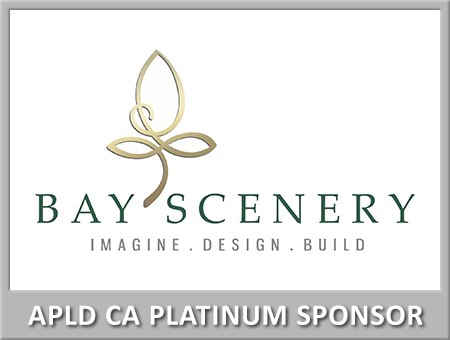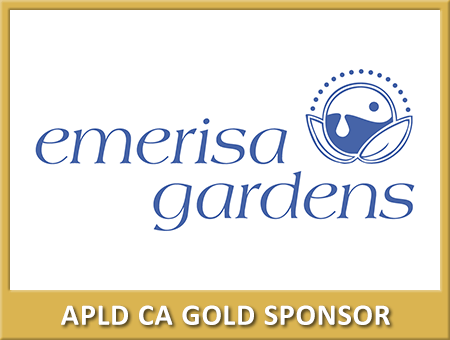What is APLD?
How do I choose a landscape designer?
Equally important is finding a designer whose style and personality are a good fit for your project. Landscape design is a collaborative process, so trust and confidence are vital to a successful designer/homeowner partnership.
What are the differences between landscape designers, landscape architects, and landscape contractors?
Landscape architects are licensed by the State of California and, in addition to the plans typically provided by a landscape designer, are qualified to produce construction-ready plans that may include complex retaining walls, grading and drainage plans, and physical structures. Their training emphasizes design for large public and commercial spaces such as parks and commercial landscapes, although some specialize in residential projects.
Landscape contractors are licensed to install the designs created by landscape designers and landscape architects. Some are design/build businesses, and provide design services as well. When working with a design/build firm, be sure to clarify the design process used and whether you will receive landscape drawings for your review and approval or just a verbal or written description of the landscape to be installed. Some design/build companies bundle the design fees with the cost of construction, but it is still important to understand the design cost component should you decide to hire a different company for installation. To learn more about Licensed Landscape Contractors in California, visit the web sites for the California Landscape Contractors Association, and the Contractors State License Board.
How does the design process work?
While the process may vary depending on the designer, the client’s needs, and the complexity of the project, most residential design projects include the following:
Initial Consultation. This is a chance to meet the designer and review the requirements and objectives of the project. Many designers charge for this visit, so to get the most out of the experience, ask the designer the best way to prepare and be sure you understand exactly what will be covered at this meeting. To start developing your requirements, click here.
Concept Plan. After listening to your ideas and priorities, the designer analyzes the site’s character, strengths and problems, and then develops one or more alternative concept plans for review.
Master Plan. The final master plan represents the culmination of your choices with the designer, and typically includes a complete spatial layout for your outdoor living spaces and other hardscape or architectural concepts.
Planting Plan. This is a working drawing from which the garden will actually be planted, and includes botanical names, container sizes, specific plant locations, and planting instructions to the contractor.
Additional Plan Documents: Depending on the scope of your project, your designer may also provide a lighting plan, specialized guidelines on planting or irrigation, or notes and sketches on design elements such as water features or furniture and accessories placement.
Installation Assistance: Many landscape designers will assist you in soliciting and reviewing construction bids, including referring contractors appropriate for your project. Others may choose to provide drawings only. Designers often stay involved throughout the installation phase to advise on design modifications, material selections and purchase and placement of garden art and accessories.
I love the landscape shows on HGTV — will I have the same experience?
Yes and no. Shows like Curb Appeal and Landscape Smart correctly demonstrate the vision, creativity, practical advice and plain old fun a designer brings to a project. In fact, many APLD members have appeared on these shows.
Some shows, however, may mislead homeowners as to the time and money the design and installation processes actually require. Design time and construction labor are not included in the installation costs revealed at the end of the show, and materials have often been discounted or donated. Cost and time for important installation components such as demolition, grading, and irrigation are often ignored.
What does a landscape design cost?
What about the budget for my landscape installation?
There is extensive documentation of the value that intelligent, thoughtful landscape design can add to your home. In many parts of California, the value of the land surrounding your home is equal to, or sometimes even greater than the value of the home itself. Well designed, installed and maintained landscaping can lead to a substantial increase in the overall value of your home. A budgeting rule of thumb for a complete landscape installation or renovation is 5-10% of the total value of your home, including the land. Therefore, if you own a $550,000 home, plan to spend between $27,500-$55,500 for a basic, functional landscape that will return up to 200 percent in value. Unusual materials, mature specimen plantings, or elaborate hardscape will add to this figure.
The most successful landscape projects start with a realistic budget. Don’t hesitate to share your budget with the landscape designer. The designer can help strike a balance between special materials and cost-conscious choices to create a beautiful space that meets your functional, aesthetic, and budget preferences before you ask contractors for bids.
Finally, be sure to budget for the ongoing care and maintenance of your new surroundings. Good maintenance will protect your investment, as well as ensure many years of personal enjoyment and satisfaction.
























